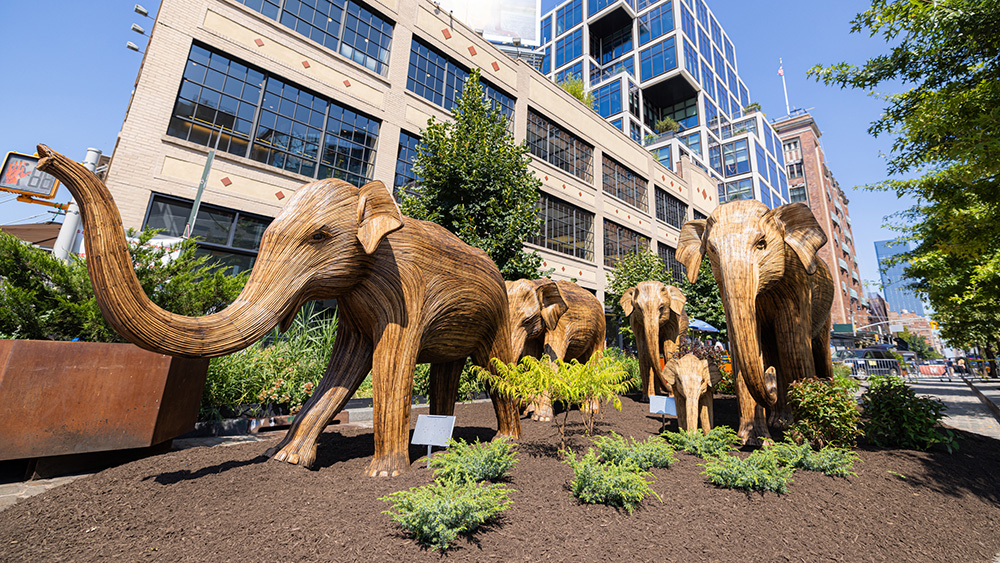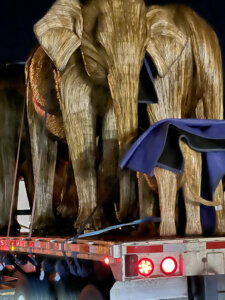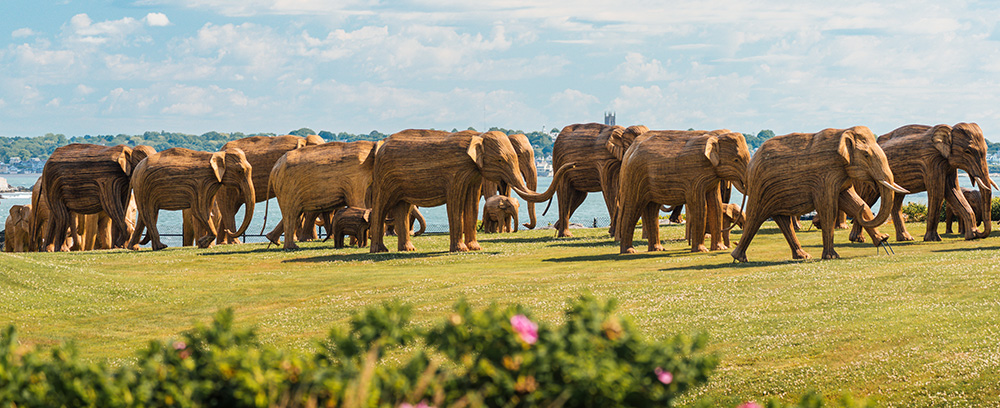
The Great Elephant Migration exhibit is on display in New York City’s Meatpacking District until Oct. 20. (Courtesy BrakeThrough Media)

Convene editor in chief captured this elephant being transported to New York City.
Recently, I was part of The Great Elephant Migration. Okay, I was stuck in traffic on a Connecticut highway one evening in early September when a herd of life-sized elephant sculptures strapped to a flatbed truck pulled up alongside us. They were making their way from Newport, Rhode Island, to New York City, where 100 of them are now on display in the Meatpacking District. I had seen signs about the elephant installation when I visited Newport earlier and had read about the traveling U.S. exhibition, so while I was startled to see the elephants suddenly appear in the next lane, I was delighted that I could put them in context.
The Great Elephant Migration is an awe-inspiring outdoor exhibition that tells a sustainability story. The elephants — made by a community of 200 Indigenous artisans in southern India who share space with elephants in the wild — convey the need to cohabit with other animals as our growing population encroaches on their habitat. They’re constructed out of lantana, a toxic weed that suppresses the growth of vegetation elephants and other animals need to survive. Clearing the forest of this invasive plant not only resulted in the elephant’s elegant, reedy facade, it helped restore the delicate balance of nature.
I may have missed my opportunity to walk among the elephants in Newport, but New York City, here I come.

The Great Elephant Migration marched through Newport, Rhode Island, before heading to New York City. (Courtesy BrakeThrough Media)
Michelle Russell is editor in chief of Convene.
